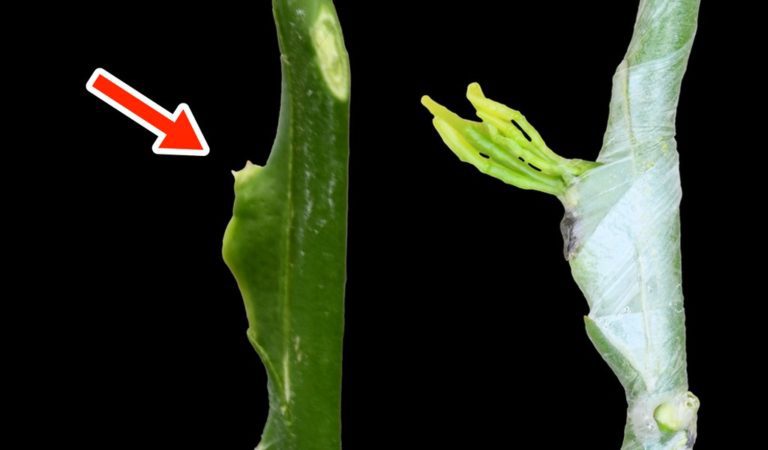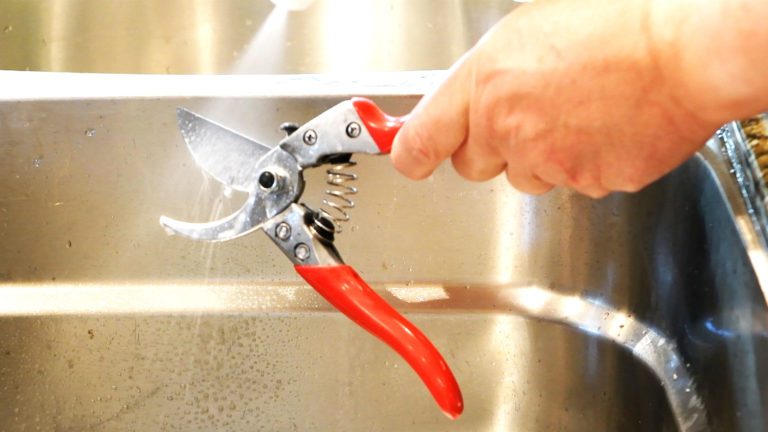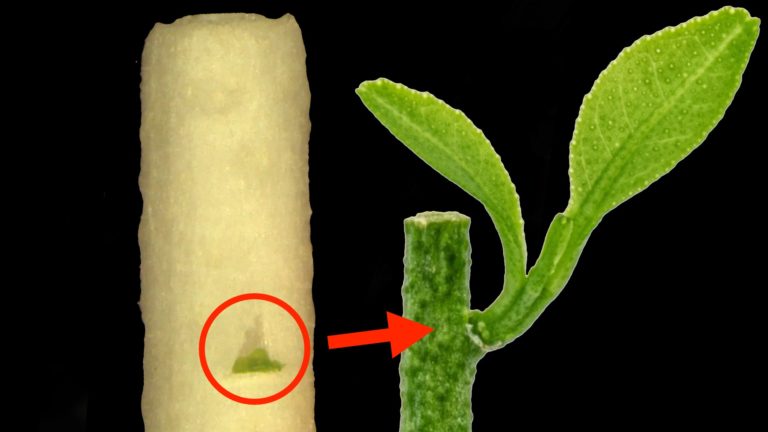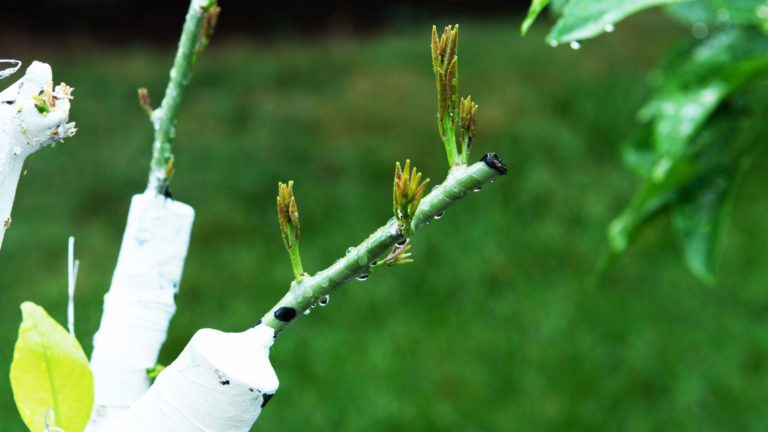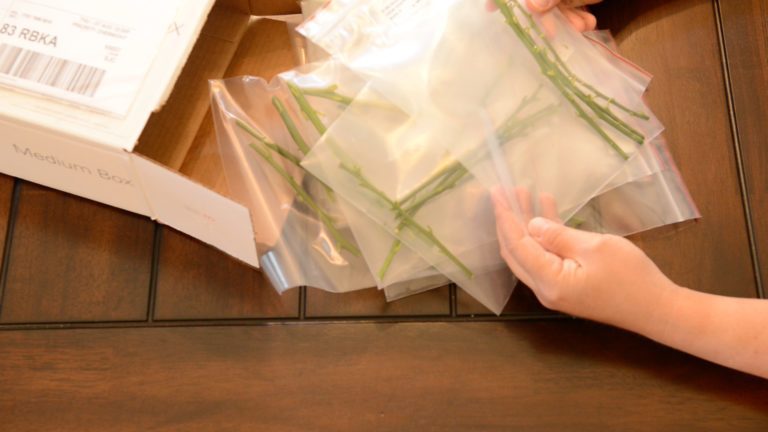Side Grafting Peach Trees
This tutorial shows a very effective technique for side grafting fruit trees. The double-tongued side graft gives a very high success rate and is useful for top working trees with small diameter stocks. This method of side grafting is also useful for grafting early in the season when the bark is not slipping and a bark graft is not feasible. The technique is useful for grafting stone fruit trees (i.e. grafting cherry trees, grafting peach trees, grafting plum trees, etc.)
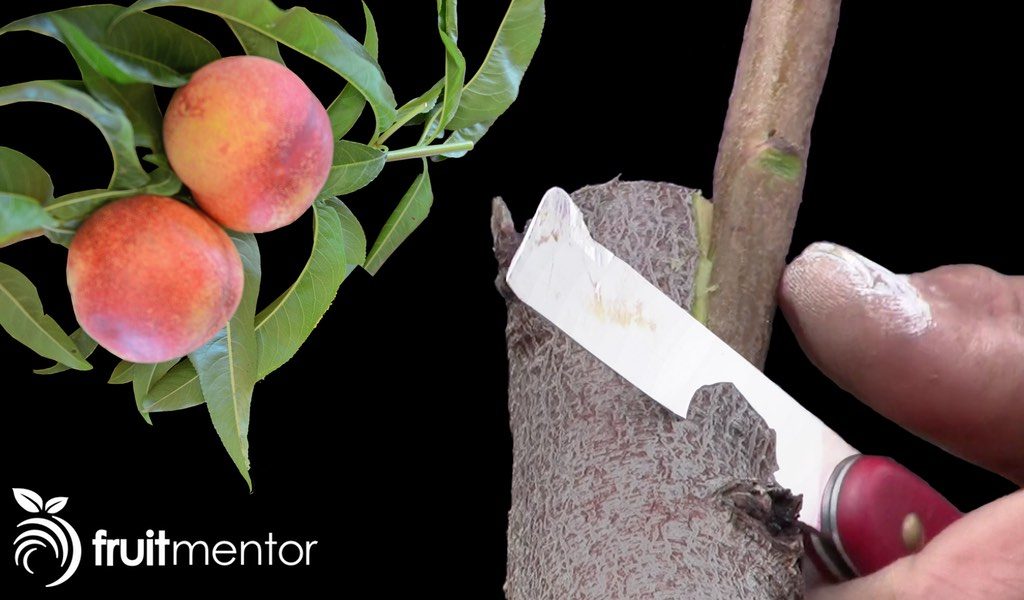
Side Grafting Fruit Trees – Double-Tongued Side Graft – YouTube Video
In addition to this step-by-step guide, I have also made a YouTube video (see below) showing side grafting fruit trees with a double-tongued side graft.
Stone Fruit in Silicon Valley
I saw this side grafting technique performed last year in the southern part of California’s Santa Clara Valley at the farm of Andy Mariani. Santa Clara Valley was once called the Valley of Heart’s delight and was famous for its delicious fruit. The valley’s warm days and cool nights give it the ideal climate for growing stone fruit. Andy Mariani grew up in the Santa Clara Valley on his family’s farm in Cupertino. Today the Santa Clara Valley is known as Silicon Valley and is famous for technology. The previous headquarters of Apple was close to what was once the Mariani farm. Apple recently built a new campus in Cupertino to house more than 13,000 employees. Apple planted fruit trees in what was once an apricot orchard.

In 1957 the Mariani family relocated its orchard from Cupertino to its current location in Morgan Hill.
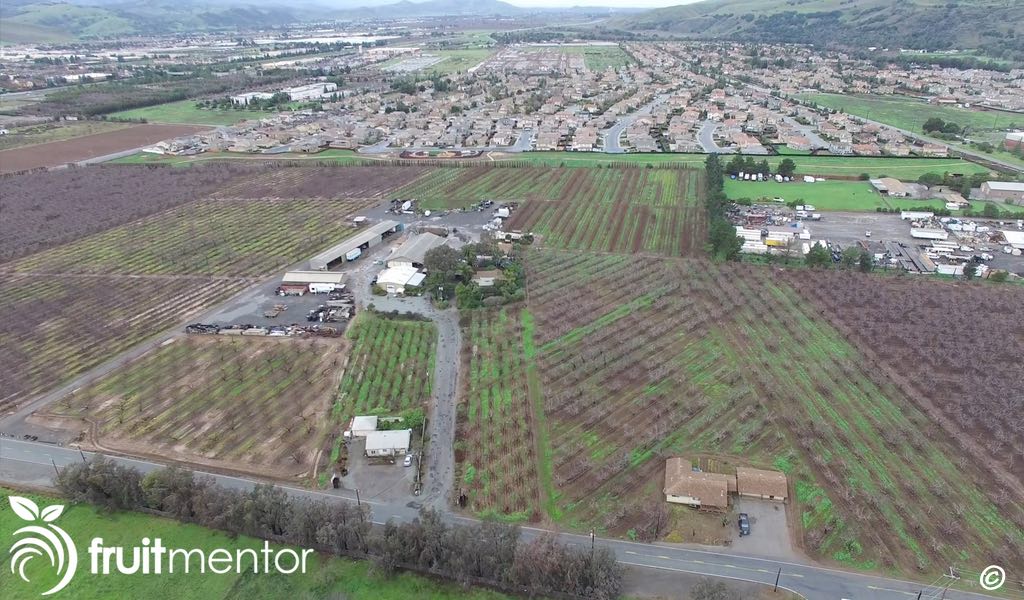
Top Working Stone Fruit Trees
Andy’s orchard grows hundreds of varieties of fruit, both heirloom and modern, focusing on varieties with the best flavor. Andy Mariani experiments with many fruit varieties to determine the ones that his customers most prefer. When more fruit of a certain variety is needed, this can be achieved by grafting scions of the desired variety to a tree of a less desired variety. This is called topworking.
Source of Budwood
As with citrus, the source of budwood for stone fruit trees is important. In California, all budwood for grafting citrus trees is required to come from a disease free source. As of 2021 the situation with stone fruit budwood is different. The most serious diseases of stone fruit trees are not known to exist in California, but they are present in other areas. Movement of stone fruit scions from certain areas can spread diseases that would be devastating to both farmers and also to hobbyists growing their own fruit trees.
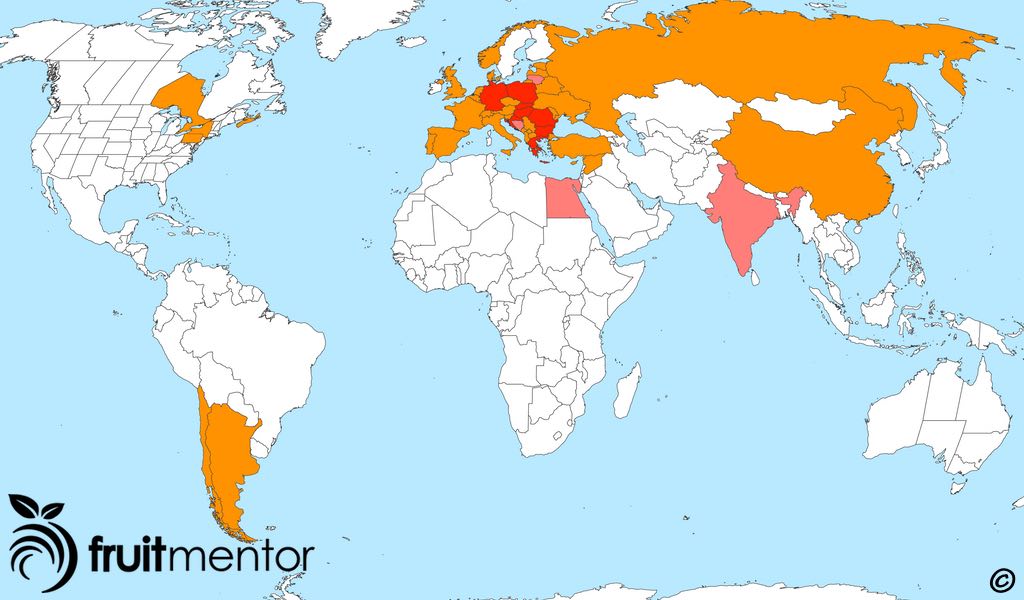
Sourcing Budwood Locally
Sourcing stone fruit budwood locally helps to avoid the spread of disease. There are clubs in California that make locally-sourced budwood of species that are not restricted available to hobbyists. The below photo shows a scion exchange in California's Santa Clara Valley. The movement of serious diseases of stone fruit into California could put an end to scion exchanges of stone fruit budwood.
In locations that have serious diseases such as plum pox, there may be restrictions on grafting with uncertified budwood similar to California's restrictions on citrus propagation. Understanding the local situation before moving stone fruit budwood or grafting with it can help to avoid the spread of disease.
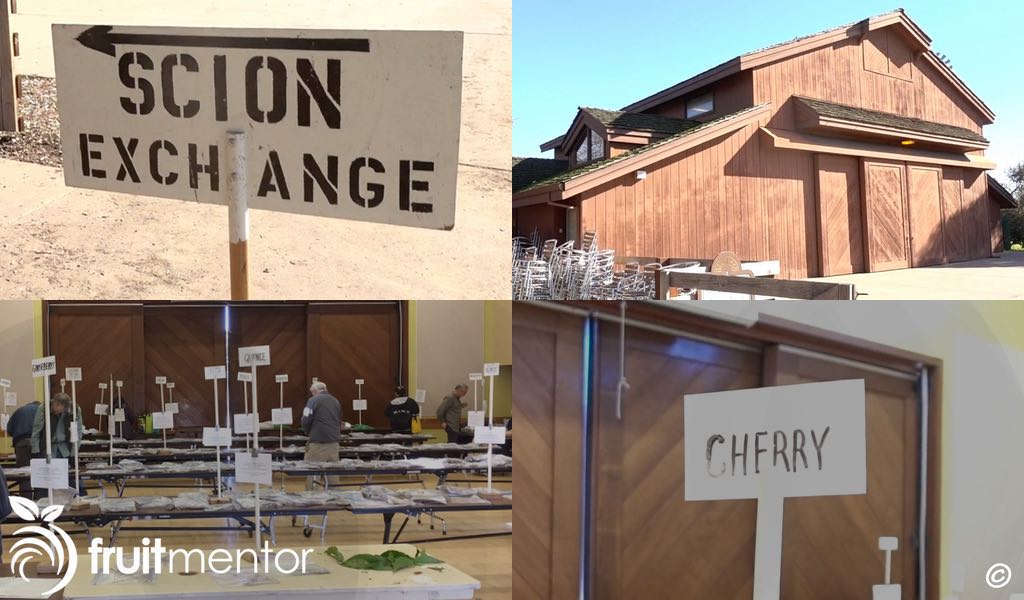
Double-Tongued Side Grafting
This type of side grafting is useful both when the diameter of the stock is small and also early in the season when the bark is not slipping and a bark graft is not possible.
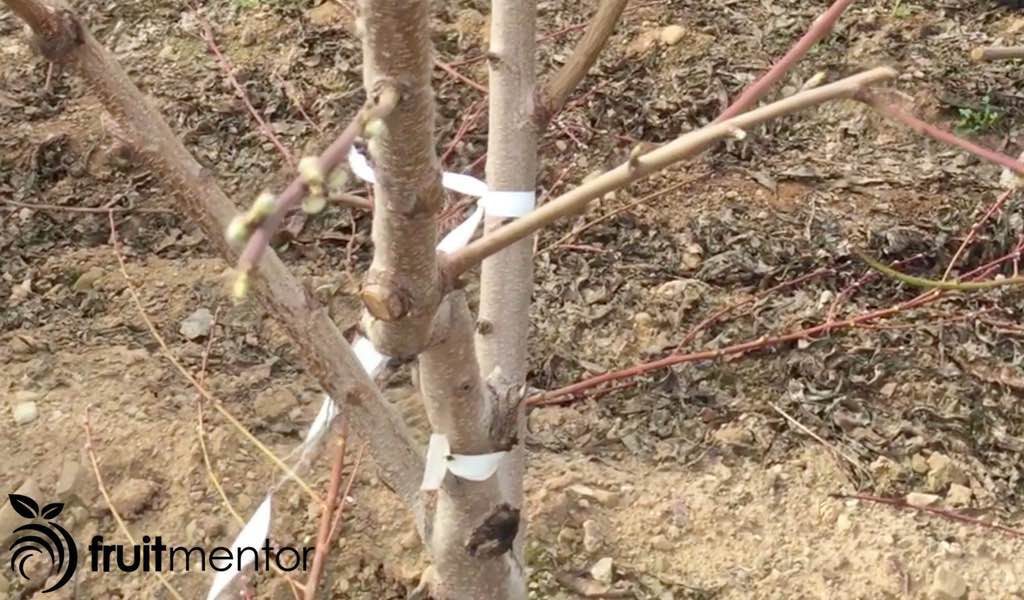
Removing the Branches
The first step is to cut off the tops of the branches to be grafted.
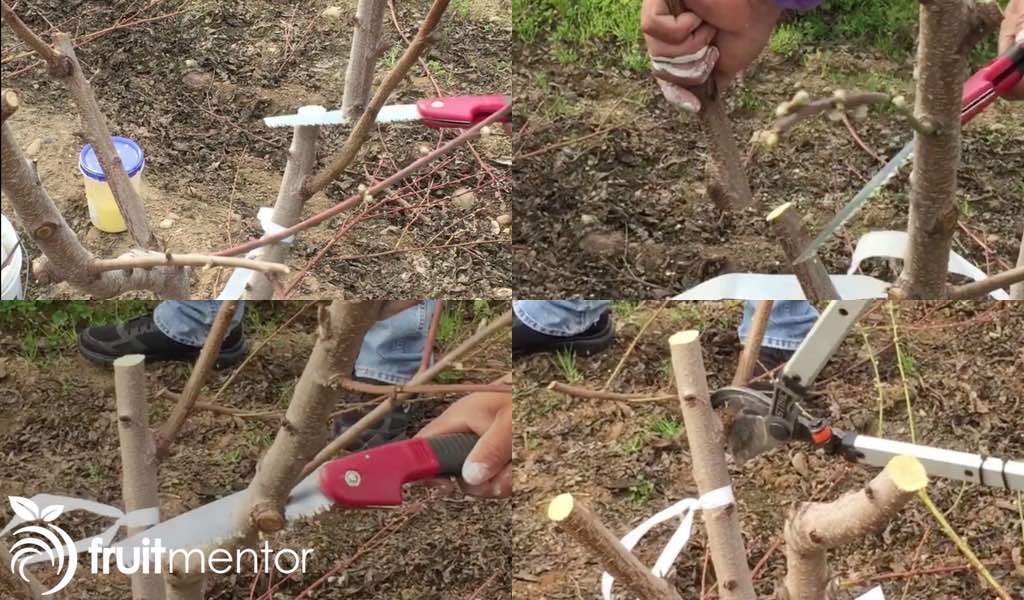
Cutting the Scion
The next step is to cut the bottom of the scion at an angle.
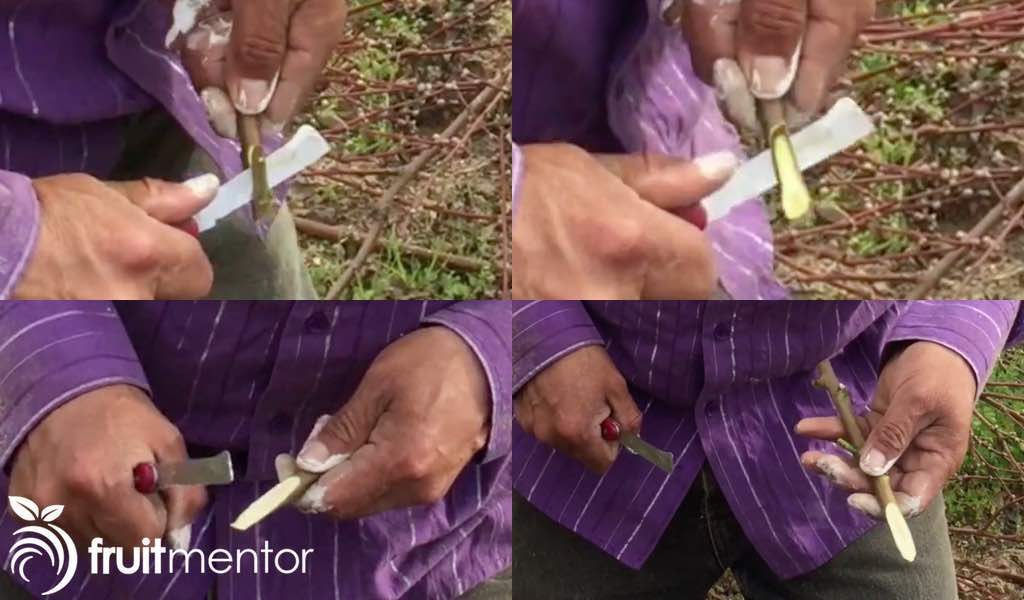
Side Grafting to a Straight Part of the Stock
The stock had an undesirable curve at the grafting point. Sawing it shorter revealed a straight part to better fit the scion.

Exposing the Cambium of the Stock
Next a portion of the stock was cut off to match the exposed portion of the scion.
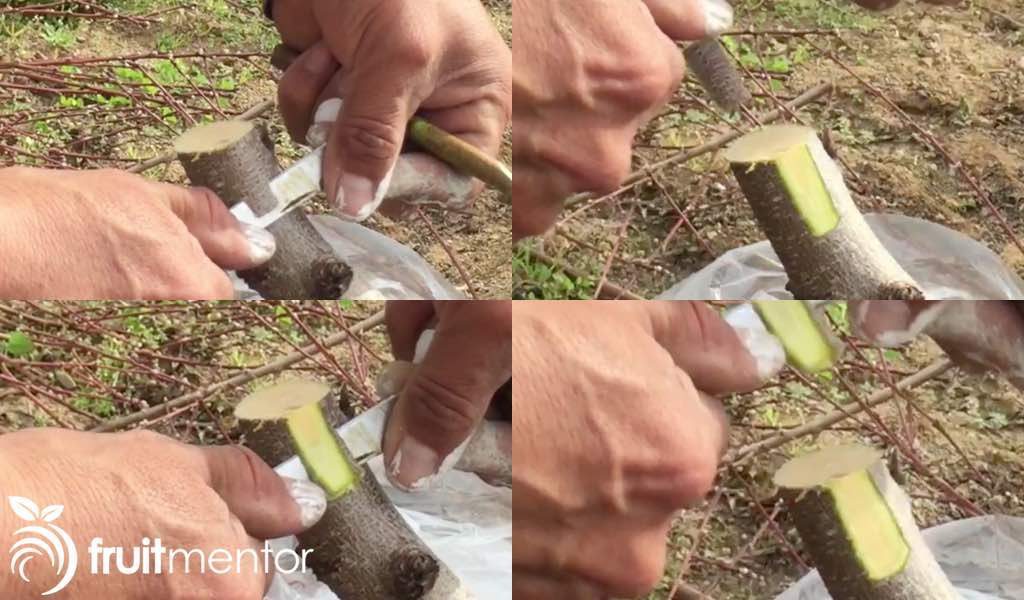
Cutting the Tongue in the Scion
Then the tongue in the scion was cut.
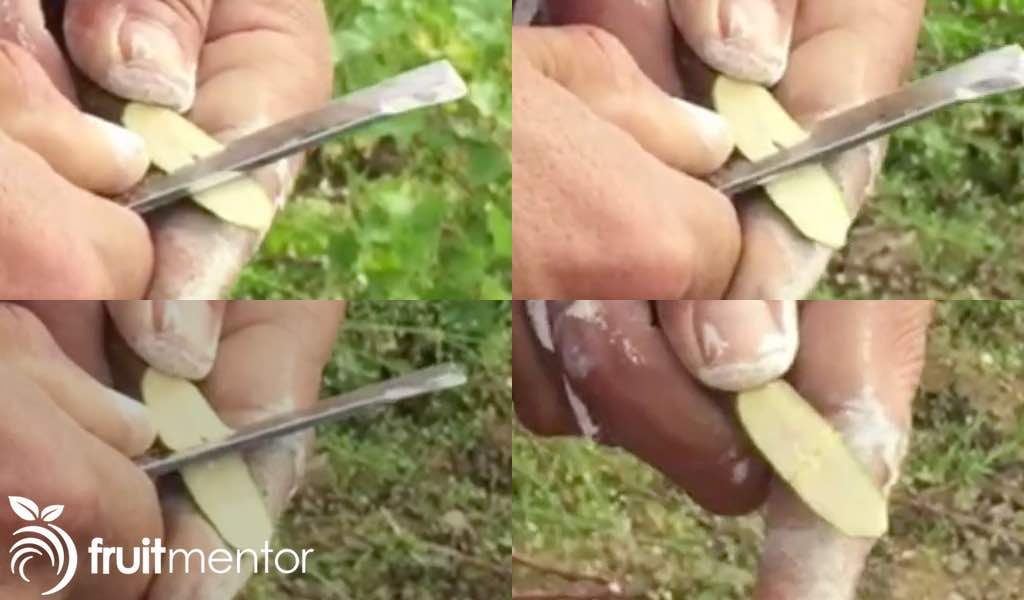
Cutting the Tongue in the Stock
A tongue was cut in the stock to match the tongue in the scion.

Inserting Scion into Stock
Next the scion was inserted into the stock.
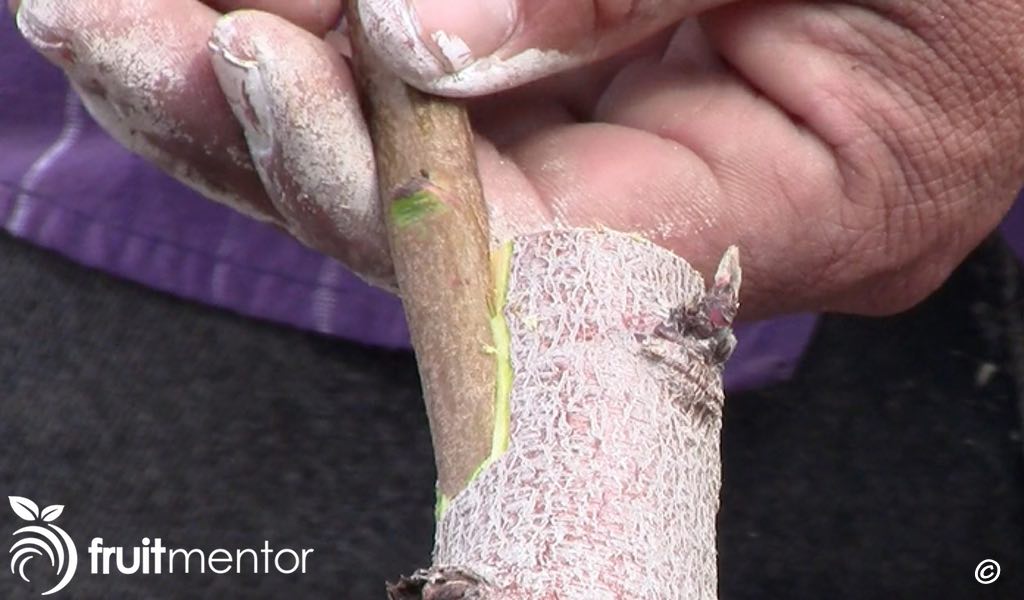
Cutting the Second Tongue
Then a second tongue was cut into the stock and the scion was pushed into the second tongue.
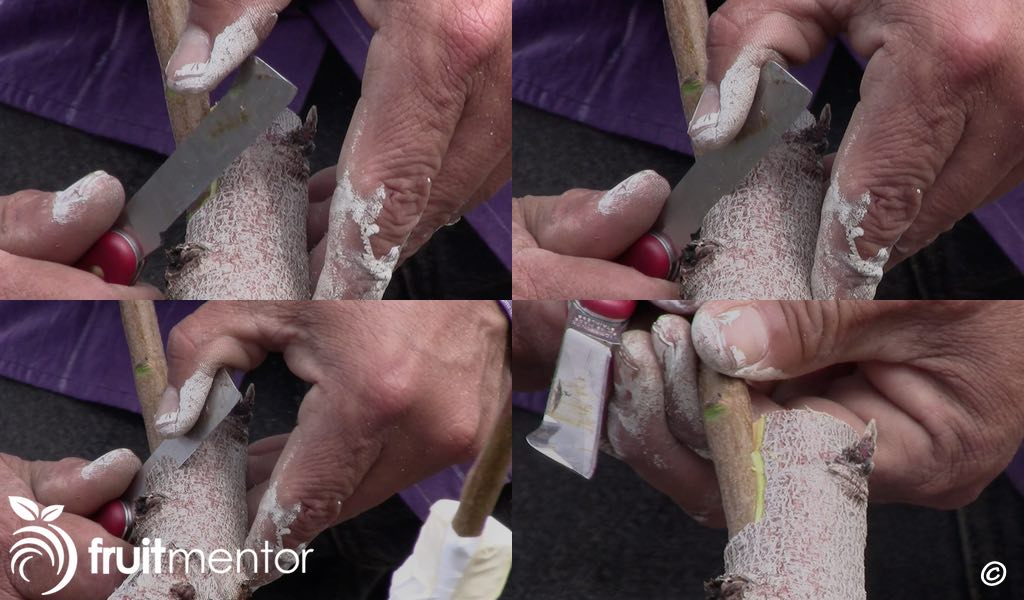
Locking the Scion in Place
Tapping pushed the scion in further to lock it in place, eliminating the need for a nail or other means of securing the scion to the stock.
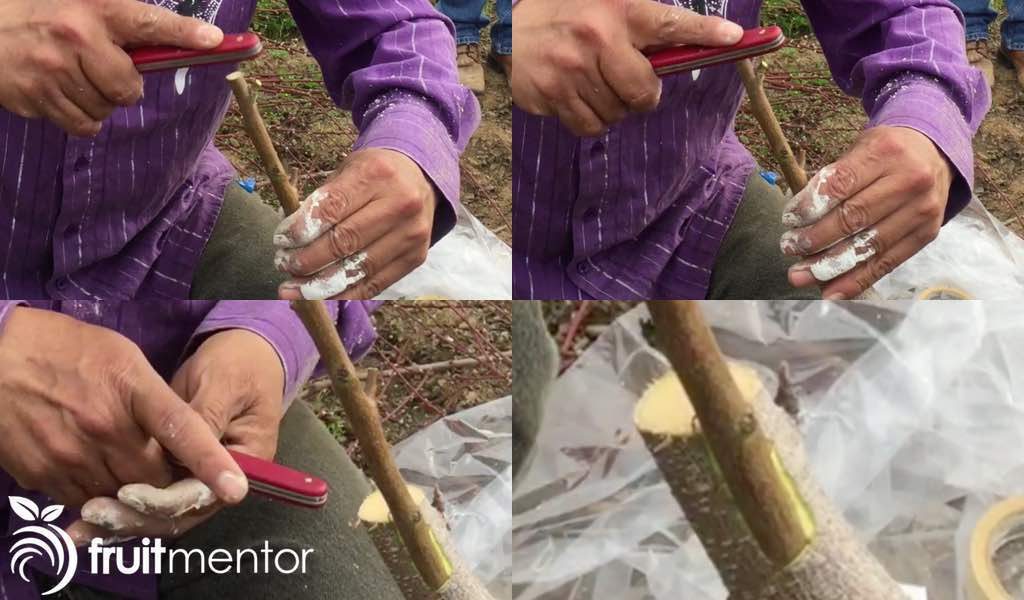
Wrapping with Grafting Tape
Next the graft was wrapped with vinyl grafting tape.

Applying Masking Tape
Masking tape was then applied to the unwrapped side of the graft union to prepare for the next step.
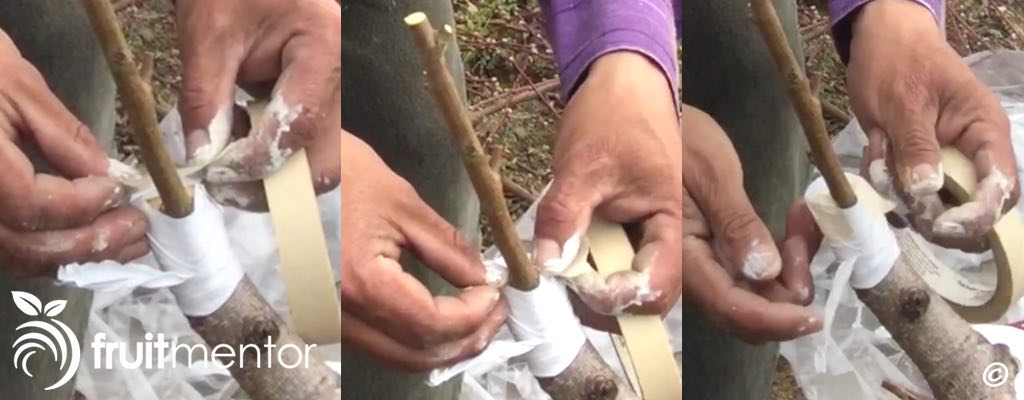
Application of Grafting Seal
Grafting seal is then applied to seal the wound. The tape from the previous step prevents the grafting seal from seeping in between the scion and the stock, which would interfere with the healing of the graft and reduce the chances of success. Grafting seal is also applied to the end of the scion to help prevent the scion from drying out.

The Healed Side Graft
The below photo shows the healed side graft almost a year later. The next summer the tree will already be bearing fruit of the new variety.
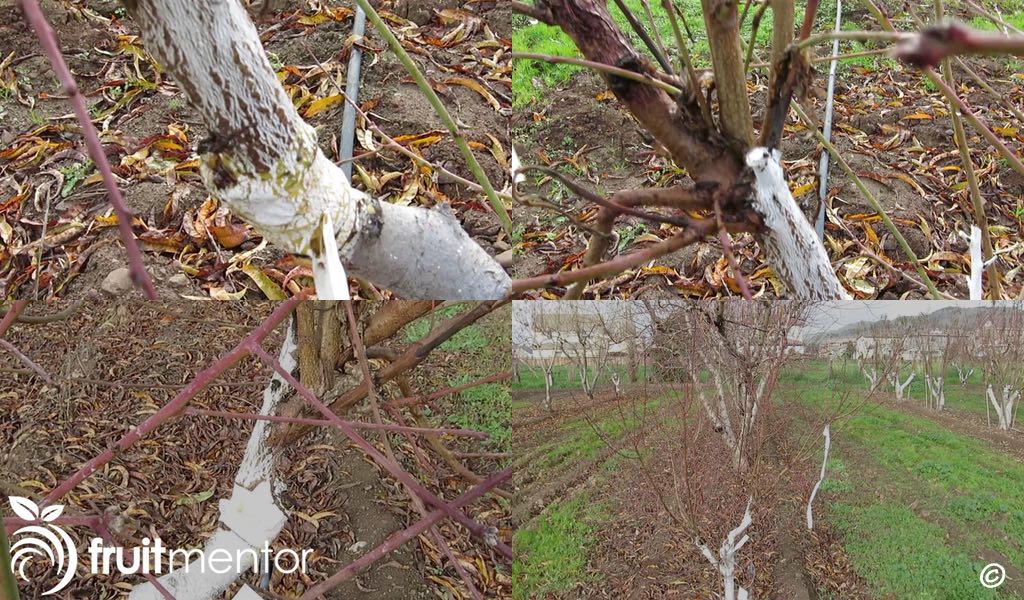
Acknowledgements
Thank you to Andy Mariani for the grafting demonstrations.
Thank you to Michael Cohen for the use of his video footage of the grafting demonstrations. The addition of his footage to mine showed all of the steps of this grafting technique.

